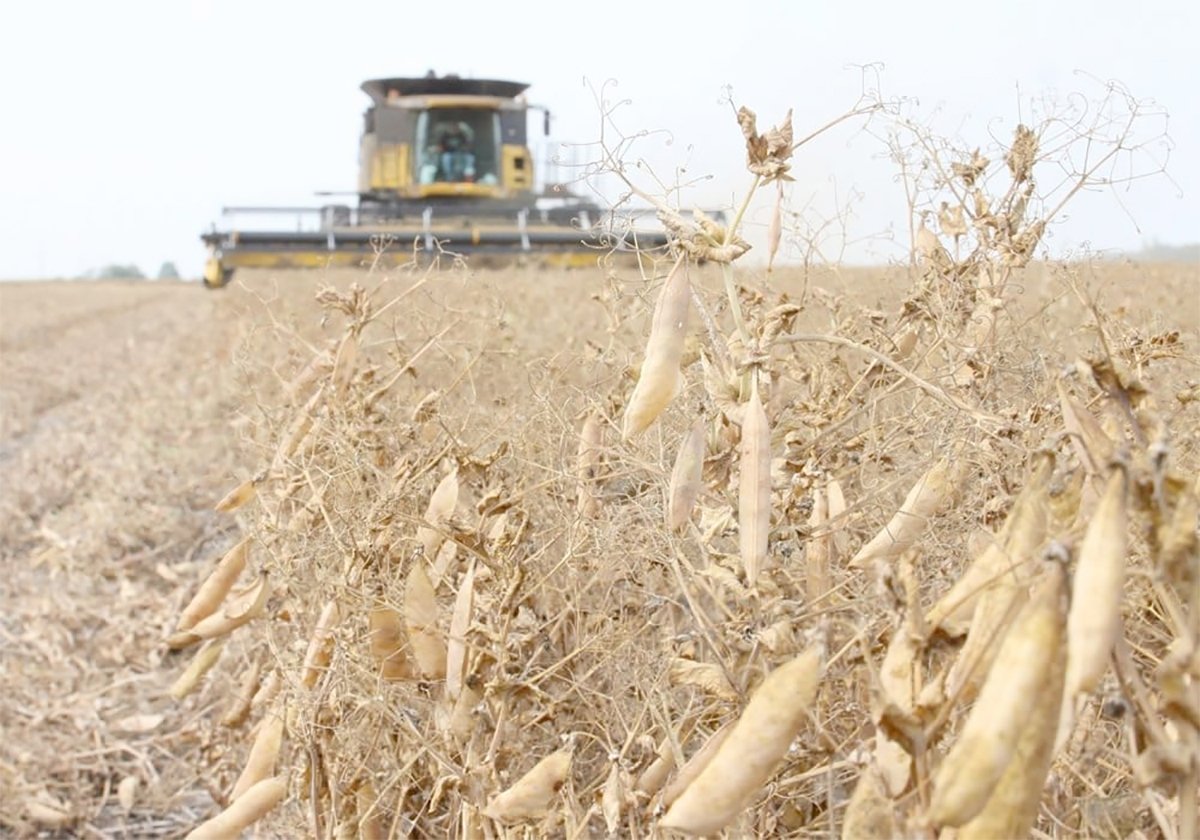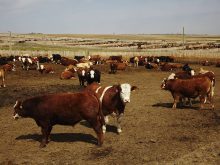This cattle market information is selected from the weekly report from Canfax, a division of the Canadian Cattle Association. More market information, analysis and statistics are available by becoming a Canfax subscriber by calling 403-275-5110 or at www.canfax.ca.
Fed market rallies
The fed cattle market continued to rally last week, trading in the high $240s per hundredweight, an increase of $7.82 per cwt. over the last four weeks. Dressed sales were reported at $408-$411 per cwt. delivered, $3 per cwt. stronger than the previous week.
Read Also

Chinese, Indian tariffs take toll on pea prices
The disruption of pea exports from Canada’s largest customers will likely result in slow pea exports for the remainder of the crop year.
The Alberta cash-to-futures basis was -$15.13 per cwt., $3.69 per cwt. weaker than the five-year average, and is the weakest basis since 2004 for the same week.
The December live cattle contract reached a monthly low on Nov. 18, closing at $182.95 per cwt., but rebounded $5.02 per cwt., closing Nov. 29 at $187.97 per cwt.
For the week ending Nov. 23, western Canadian fed slaughter was 44,868 head, the third largest slaughter for the year and five per cent higher than a year ago for the same period. It was the first time slaughter has run above the five-year average for two consecutive weeks since mid-May.
For the week ending Nov. 16, Canadian fed cattle and cow exports to the United States were 12,383 head, down 19 per cent from last year. It was the second consecutive week exports were below year ago levels. Year-to-date exports reached 508,521 head, 16 per cent above last year.
Ontario fed cattle traded sideways for the fourth week, averaging in the mid $240s per cwt. Dressed sales were reported at $411 per cwt. delivered, steady with the previous week.
In the U.S., trade turned moderately active on Nov. 27 in advance of the U.S. Thanksgiving holiday. Trade in the southern feeding states was from US$188-$190 per cwt., $2-$3 per cwt. stronger than the previous week. Trade in Nebraska was $190-$192 per cwt. live, and $295/cwt dressed.
Live sales were $5 per cwt. higher than the previous week with dressed sales up $3-$5 per cwt.
U.S. slaughter for the holiday shortened week was estimated at 528,000 head, down 103,000 head from the previous week. U.S. steer carcass weights continue to run near record highs. For the week ending Nov.15, they averaged 956 pounds, 20 lb. heavier than last year and 30 lb. heavier than the five-year average.
Feeder cow activity
Non-fed volumes have seasonally increased but remain much lighter than last year. Butcher cow prices found stability, averaging in the mid $160s per cwt. Western Canadian packers are showing good interest in the market, but the most active participants are feeder cow buyers.
Last week D2 cows averaged $168.75 and D3s averaged $155.53 per cwt. Butcher bulls averaged $187.51.
For the week ending Nov. 23, western Canadian cow slaughter was slightly more than 7,500 head, the largest slaughter volume since March. Based on the five-year average, this is traditionally when slaughter volumes peak. For November, cow slaughter volumes are on track to be the smallest since 2012.
Demand for bred cattle has been strong, and few bred cows are entering the slaughter mix. In 25 of the past 30 years, cow prices have increased from November to December. Over those 25 years, the average increase from November to December stands at six per cent. This would put cow prices on track to average in the upper $170s per cwt. in December.
Steady to higher prices are expected over the next 30 days but a six per cent rally will likely not be achieved. U.S. cow prices have softened, and that will keep a lid on prices.
Good feeder prices
Calf prices continue to surge higher, setting new highs on a weekly basis. Over the past month, the largest price increase has been on 500-600 lb. steer and heifer calves with prices advancing $30-$35 per cwt.
Over the past few weeks, a few more preconditioned calves have hit the market and there is little to no price difference between preconditioned calves and freshly weaned calves.
Bred cattle volumes have been lighter than last year with fewer dispersals. Reputation bred heifers and second calving cows continue to trade strong.
Last week, bred heifers averaged $4,250 per head with top end sales up to $6,500 per head. Bred cows traded from $2,300-$5,200 per head, averaging $3,900. Year-end spending is supporting the bred cattle market.
Last week, the USDA announced heightened import restrictions on Mexican feeder cattle following detection of new world screwworm. The ban is expected to stay in place until at least January. Feeder cattle contracts rallied on the news, trading at the highest point since early July.
Cutouts rise
In U.S. beef trade, Choice cutouts reached their highest point in three weeks at US$311.26 per cwt. Select cutouts were slightly stronger, closing at $274.30 per cwt.














